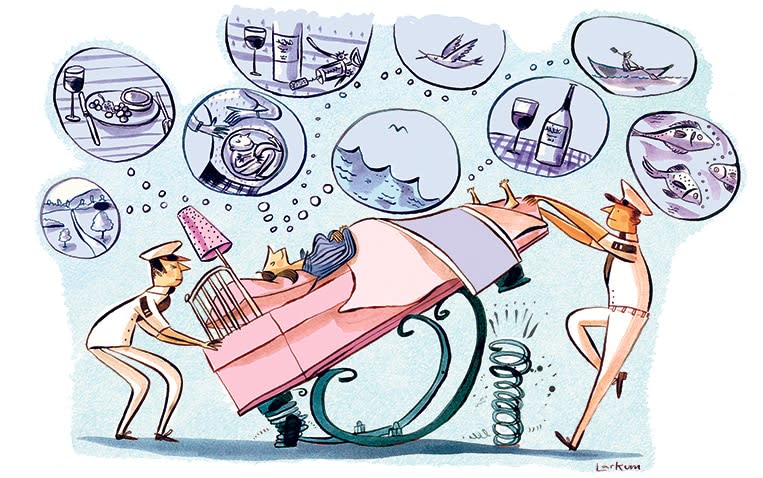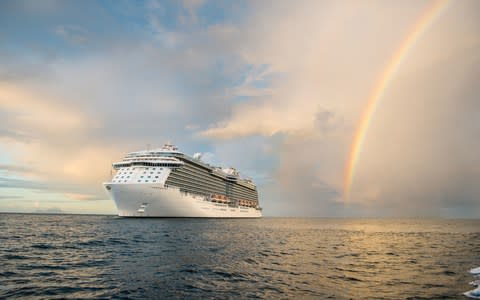Why a cruise could hold the key to better sleep

Sleep (are we getting enough of it?) is a hot topic right now. Everywhere you turn there seem to be experts telling us how many zzzs we need and advising how to get into the “zone”. And yet it is not, perhaps, the first thing you consider when booking a cruise. Destinations: yes; balcony cabin or inside cabin: yes. Pillow thickness? Probably not.
The combination of busy days ashore, maybe a spa treatment and sauna or a workout in the gym, followed by a good meal, possibly with a couple of glasses of wine, is usually enough to send most to their cabins for the night. But a holiday on the ocean is, it transpires, a more conducive context for a solid eight hours than even those who never struggle with nightly hibernation appreciate.
“There is a lot of data to suggest that a mild rocking motion – of the type you encounter at sea – really helps with sleep,” says Dr Michael Breus. “We think this is to do with memories of our mothers rocking us as babies – or even a retained sensation of being in the womb.”
Dr Breus would know. A professional “Sleep Doctor”, based in Los Angeles, he works with patients who want to improve both the quality and quantity of their rest. But his expertise also extends beyond advice and encouragement into building beds that ease the process.
And where may he find better test conditions than in a hotel? Yes – aboard a cruise ship.

Having worked with hotel brands including Crowne Plaza and Six Senses, Dr Breus has recently completed a project for Princess Cruises: to design a bed that will offer an even better night’s shut-eye for the cruise line’s passengers. He laughs at the idea that a ship’s default rolling movement made his task simple (“I guess that worked in my favour; creating a bed for a cruise ship was probably easier than making one for a hotel room”), but is also keen to explain the science behind his thinking.
“One of the challenges is the range of people sleeping in each bed from voyage to voyage,” he says. “It’s difficult to make a bed that suits all heights and sizes. We came up with a bed that is adjustable.”
According to Dr Breus, a bed has two functions – one is to support the body during sleep; the other is to ensure that you remain comfortable and maintain that sleep. “We built a bed of two layers – one for support, one for comfort. The lower layer is firmer; the second is a removable “pillow top”. Leave it on, the mattress is softer. Remove it, it’s harder.
“We also decided to bring different types of pillow into the cabin as thickness of pillow can affect quality of sleep. Thick pillows are for those who prefer to sleep on their sides, while thinner pillows suit those who lie on their backs or stomachs.”
The beds are not, of course, a magic stairway to guaranteed rest, and Dr Breus adds that there is plenty light sleepers can do to help themselves.
“I would argue that there are several things you need in order to have a good night’s sleep,” he says, identifying the modern problems of not giving the body sufficient time to process caffeine (“you should stop drinking it by 2pm”) and alcohol (“allow yourself one hour before bed for every alcoholic drink you have consumed in an evening. There is a really big difference between going to sleep and passing out”) as barriers to quality slumber.
He also evangelises body-clock stability. “A consistent sleep schedule is crucial,” he continues. “Go to bed at roughly the same time every night, and get up at the same time too. Even at weekends. If you open your eyes at the same time every day, your circadian rhythm stays in a good place. If you don’t, your brain can lose track of when to wake up.”
And there is also the option of upgrading to a better bed. Princess has already installed 45,000 of his beds on 17 of its vessels – although Dr Breus expects some of them to be removed again in the coming months. “The beds are for sale,” he smiles. “So if you really like yours, you can buy it right off the ship and take it home.”
The lexicon of sleep
Insomnia
Defined as difficulty falling, or staying, asleep, this disorder regularly affects millions of people worldwide.
Polysomnography
Also called sleep study, polysomnography is a test used to diagnose sleep disorders.
Chronotherapy
A behavioural technique that consists of gradually adjusting sleep time in line with your desired schedule.
Sleep inertia
Feelings of sleepiness and/or grogginess that persist longer than 20 minutes after waking up – part of your body is actually still in a sleep state.
Circadian rhythm
The natural rhythm that the body uses to regulate the hours it spends awake and resting.